班班有網路 生生用平板
為加強學生數位科技應用能力,熟悉數位學習平臺、工具與資源使用,並運用數位學習平臺培養自主學習能力,行政院推動中小學數位學習精進方案,可縮減城鄉數位教育落差達公平教育的目標,並於疫情期間可支援經濟弱勢、多子家庭學生有學習載具可使用。

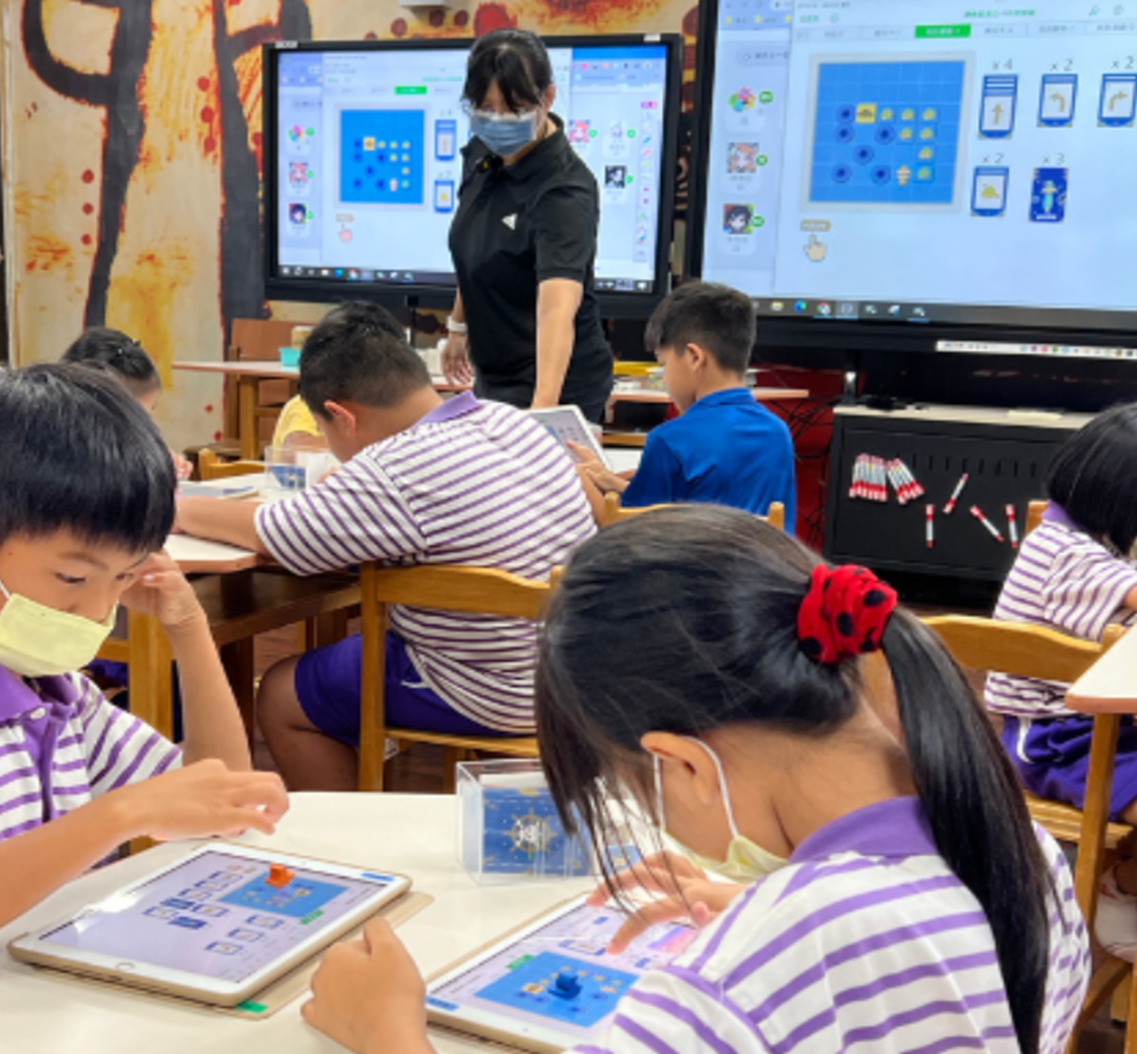
The MOE allocated 610,000 mobile devices to elementary and secondary schools. In rural areas, each student is provided with an individual device. In non-rural areas, one class set of devices is allocated for every six classes.
All devices are equipped with Mobile Device Management (MDM) systems and support Chrome OS, iOS, Windows, and Android, allowing for unified and efficient device management.
In response to increasing infrastructure demands for digital learning, the MOE has strengthened school connectivity by installing wireless networks in standard classrooms and upgrading external bandwidth.
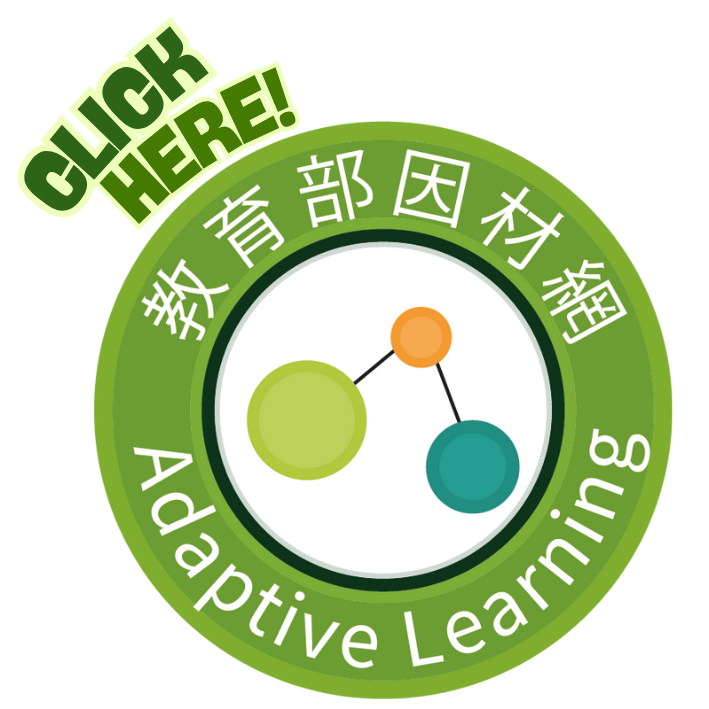
The Taiwan Adaptive Learning Platform (TALP), developed by the MOE since 2017, provides digital learning resources for Grades 1 to 12. It includes core subjects, competency-based materials, issue-oriented themes, interactive lessons, and game-based modules.
The MOE collaborates with public and private sectors to develop free learning materials in various formats, including videos, animations, e-books, games, interactive modules, virtual reality (VR), and augmented reality (AR). These are integrated into TALP and made freely available to schools nationwide.
The platform also features adaptive tools for cross-grade diagnostics and assessment, helping teachers monitor student progress and support individual learning needs.
TALP organizes subject content into a visualized knowledge structure based on the 12-Year Basic Education Curriculum Guidelines. Nodes represent learning concepts connected by prerequisite relationships across grade levels. Each node integrates instructional resources and diagnostic tools to support student progress, with mastery levels indicated by node colors to help identify learning needs.
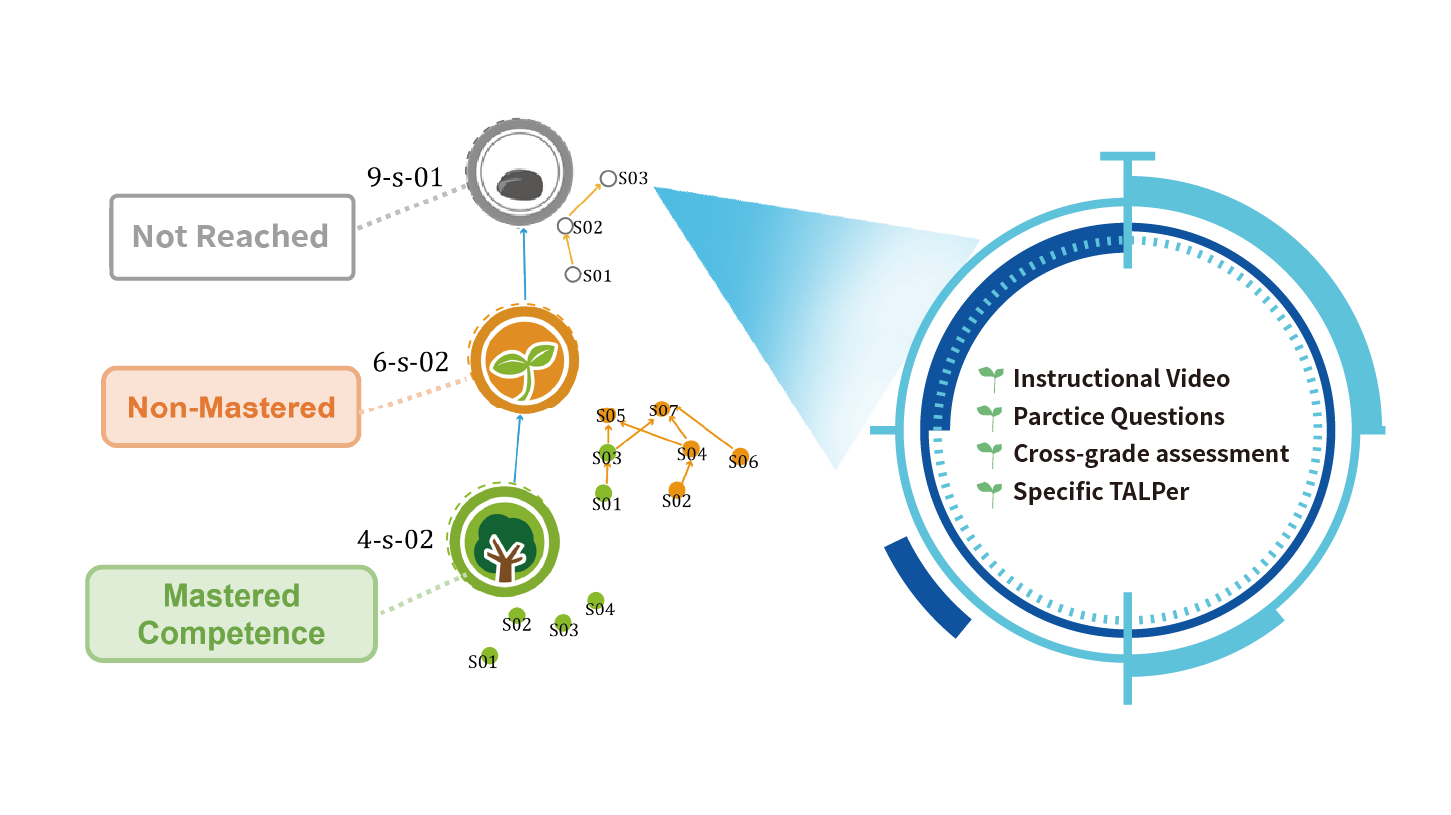

TALP features an AI-powered learning companion, TALPer, designed to support personalized and self-regulated learning. Integrated with the platform’s knowledge structure and content, TALPer supports students in addressing learning challenges and provides teachers with interactive feedback. Since its launch in September 2024, TALPer has reached over 400,000 users, with approximately 50,000 active daily.
TALPers are designed based on expectation-misconception tailored (EMT) pedagogy and Auto tutor-style dialogue with domain and specific knowledge.
G-TALPer is embedded throughout the platform, allowing students to engage at any time in areas such as math problem solving, science inquiry, writing, and drawing. It provides real-time guidance through Socratic questioning, enabling students to clarify ideas and maintain focus throughout SRL.

S-TALPer is designed based on the knowledge structure and diagnostic system used in TALP. Student progress is analyzed at the node level, and personalized learning paths are recommended according to mastery levels to support both remediation and extension.
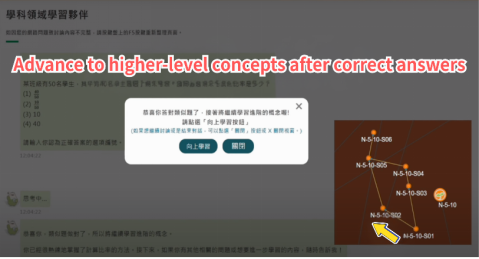
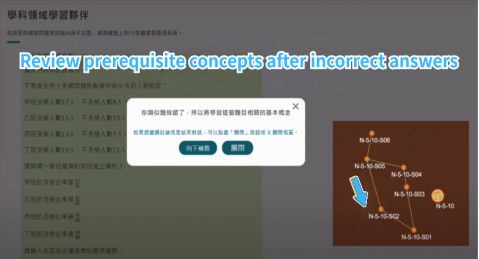
With the support of digital platforms and tools, teachers design learning experiences that incorporate self-learning, co-learning, mutual learning, and teacher-directed learning. This four-phase model fosters diverse learning interactions and strengthens students’ self-regulated learning abilities.
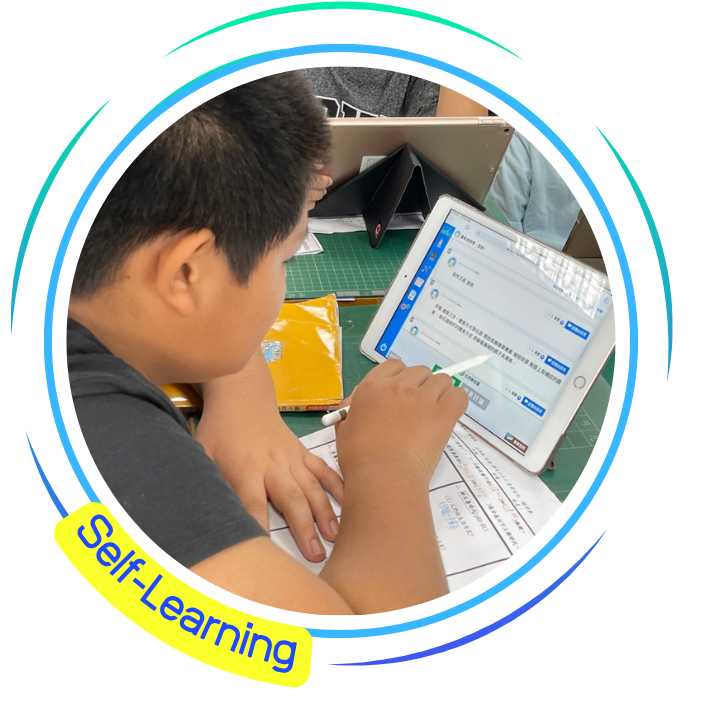
Students access digital learning content and complete practice tasks on TALP to plan learning strategies, explore key concepts and identify learning challenges accordingly.
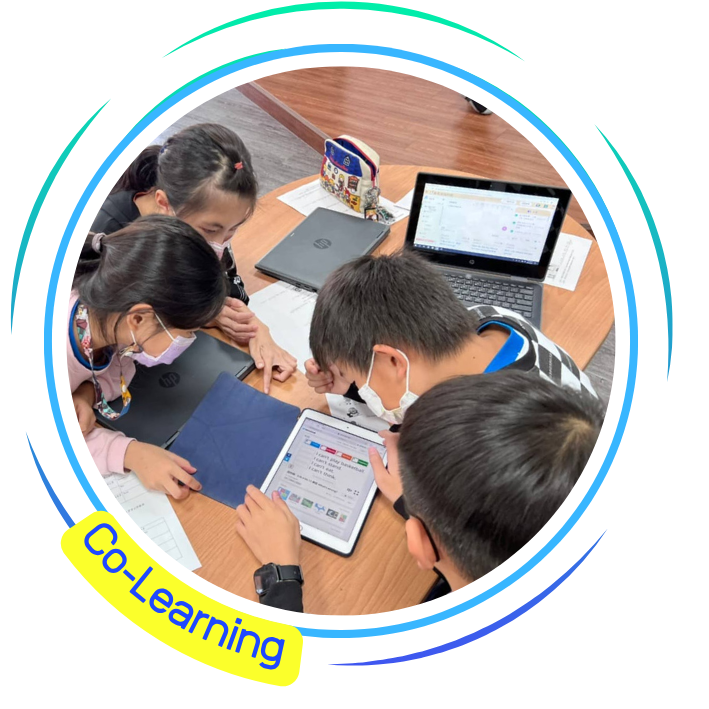
Students collaborate within groups to discuss assigned content and build shared ideas and understanding through peer interaction.
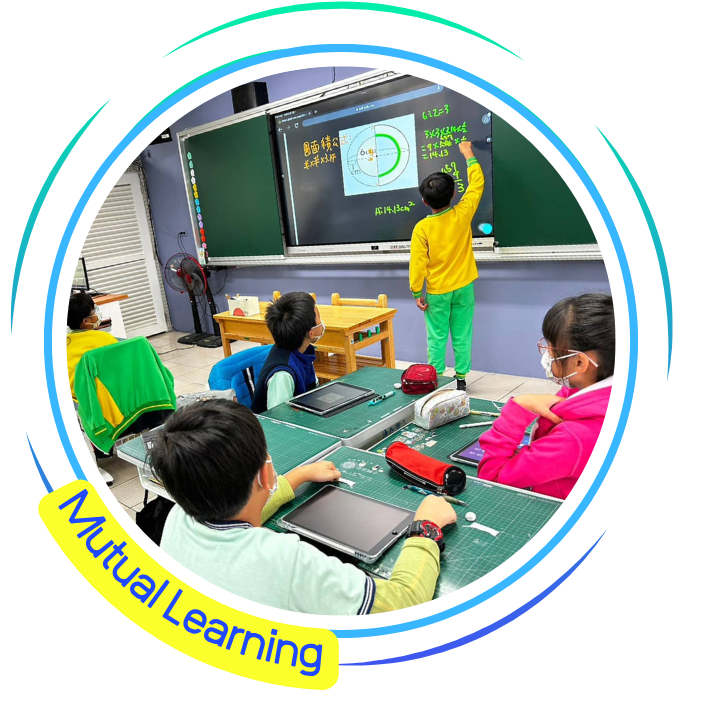
Students share their group outcomes and engage between groups to compare ideas, resolve misconceptions, and extend their learning.
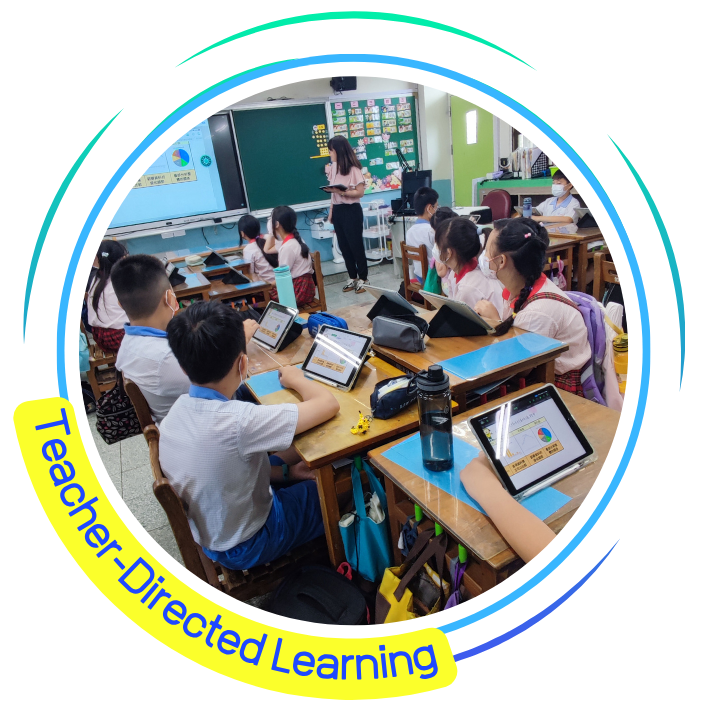
Teachers review students’ learning status to clarify concepts, address common difficulties, and guide reflective thinking.
The MOE has developed a structured training framework consisting of foundational (A) and
advanced (B) workshops. While A-level courses focus on digital teaching fundamentals,
B-level workshops emphasize applied strategies, subject-specific practices, and the
integration of generative AI through AIPACK-related modules.
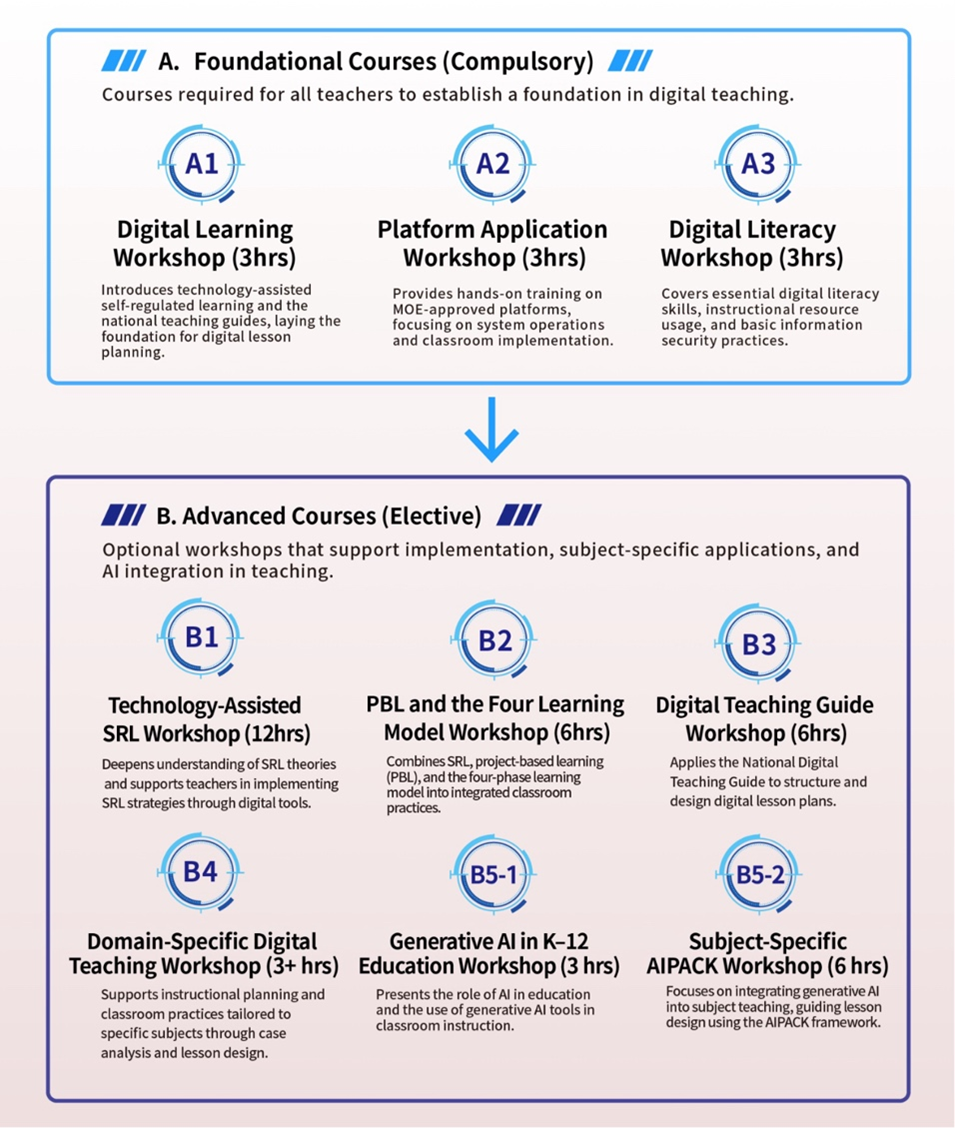
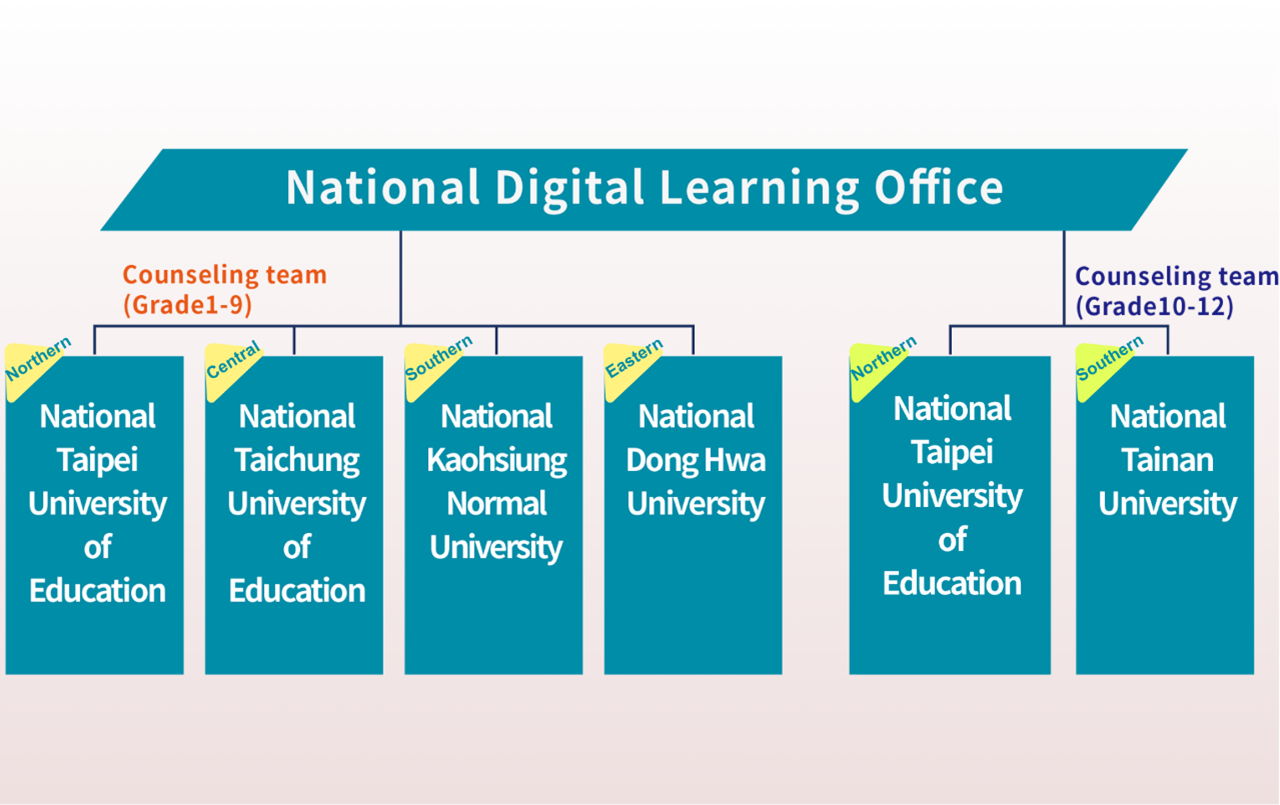
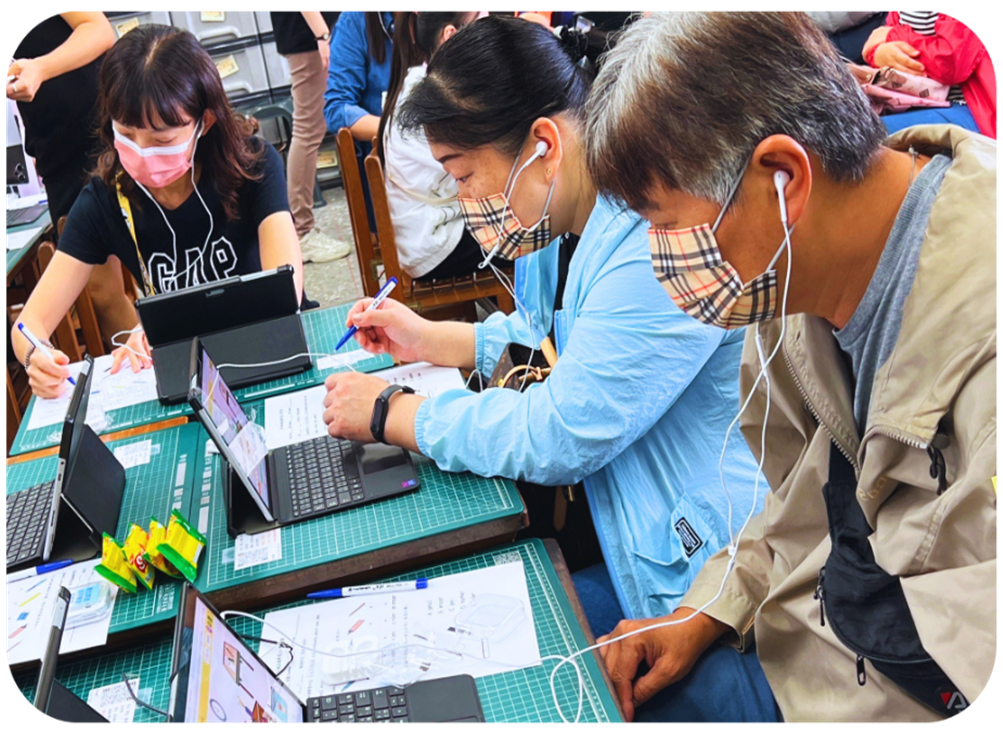
In collaboration with local governments, the MOE organizes parent-oriented workshops to introduce national digital learning policies and their application in schools. The sessions include hands-on activities and guided presentations by instructors for parent sessions, who demonstrate how families engage with Self-Regulated Learning through diagnostic tools and diverse digital content. These workshops aim to enhance parents’ understanding and recognition of the digital learning environment for their children, fostering stronger parent-child engagement.
To further support parent engagement in school-based digital learning, the MOE has established a structured system for parent learning and instructor training for parent sessions. These training programs familiarize parents with TALP features for parents and promote joint learning that connects school learning with home support.

Aligning with Taiwan’s 12-year National Basic Education Curriculum Guidelines, the MOE initiates the Bilingual Digital Learning Partnership by using technology to create competency-based learning environments for English and local languages. The Partnership uses digital platforms to enhance bilingual education and solve the problem of resource disparities between urban and rural areas. It prepares university students to digitally enhance elementary and secondary students’ bilingual proficiency while connecting learning to real-world issues.
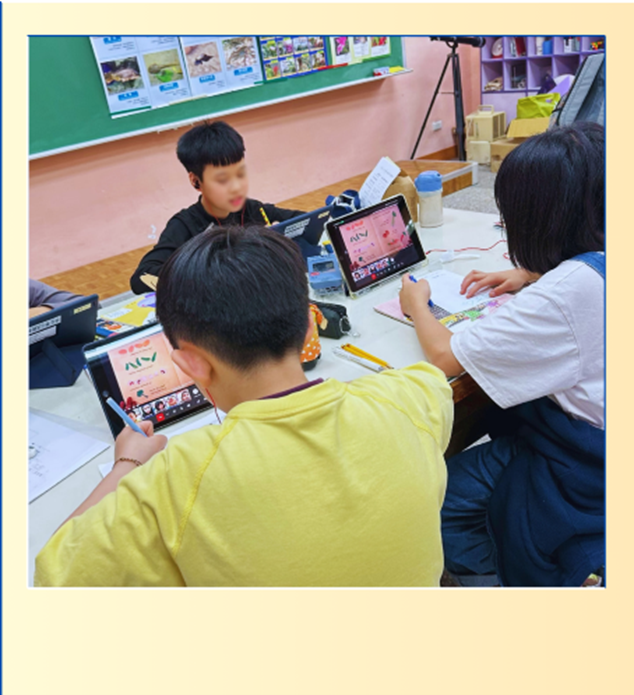

To further support online language learning, the Partnership integrates various digital resources, including Adaptive Learning, Cool English, and PaGamO. These platforms, developed or promoted by the MOE, provide elementary and secondary students with access to self-directed learning, AI-driven practice tasks, and simulated conversations to build bilingual proficiency. By making the Partnership and these resources widely available, the MOE ensures equitable access to bilingual education across different regions of Taiwan.
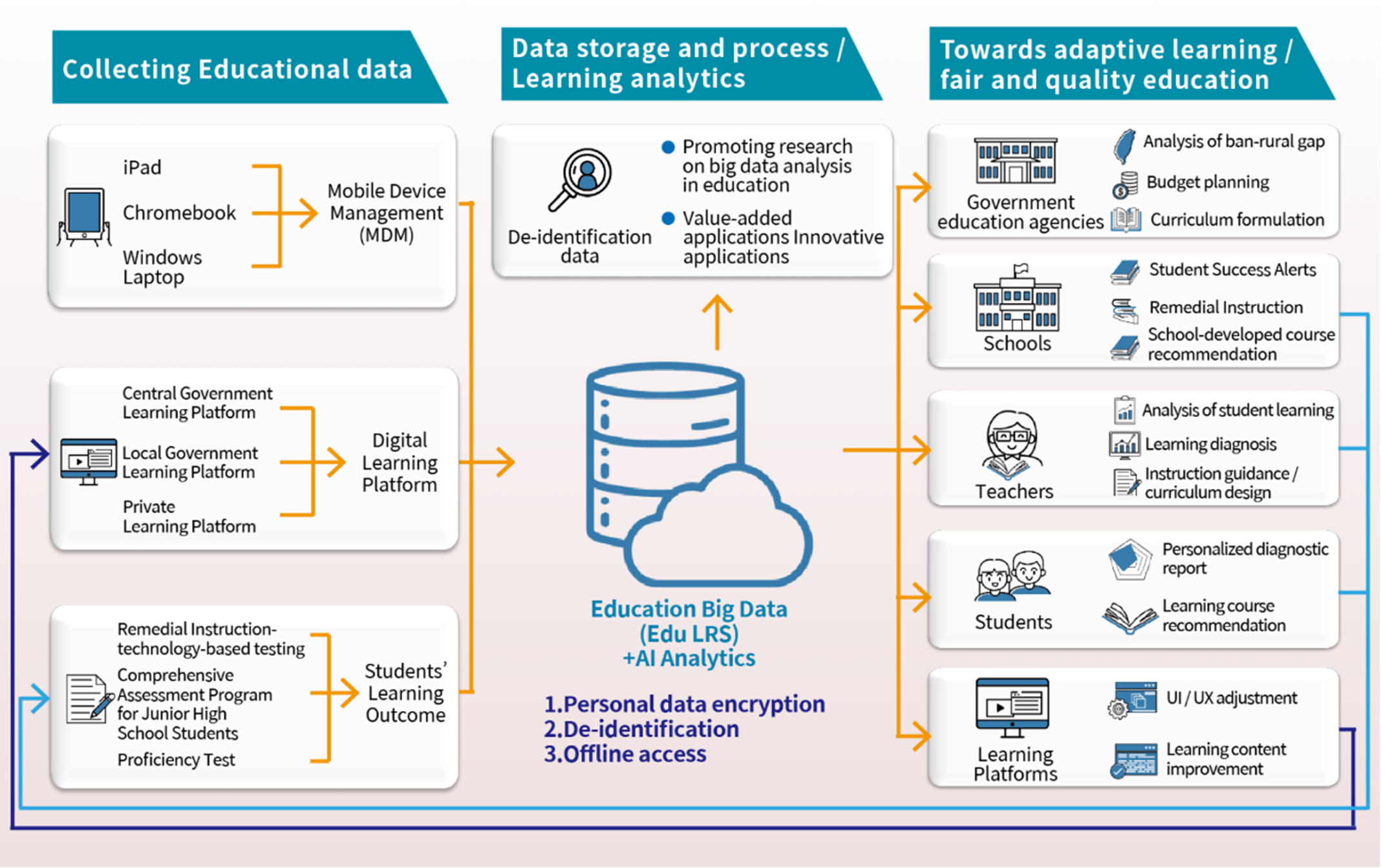
As part of a key project under the Digital Learning Enhancement Plan, the MOE has established a centralized educational big data system integrating device usage records, learning data from MOE-approved platforms operated by public and private institutions, and national assessment results to help schools and local governments evaluate digital learning effectiveness, identify learning challenges, refine instruction, improve content and platform design, and guide long-term education planning and system improvement.
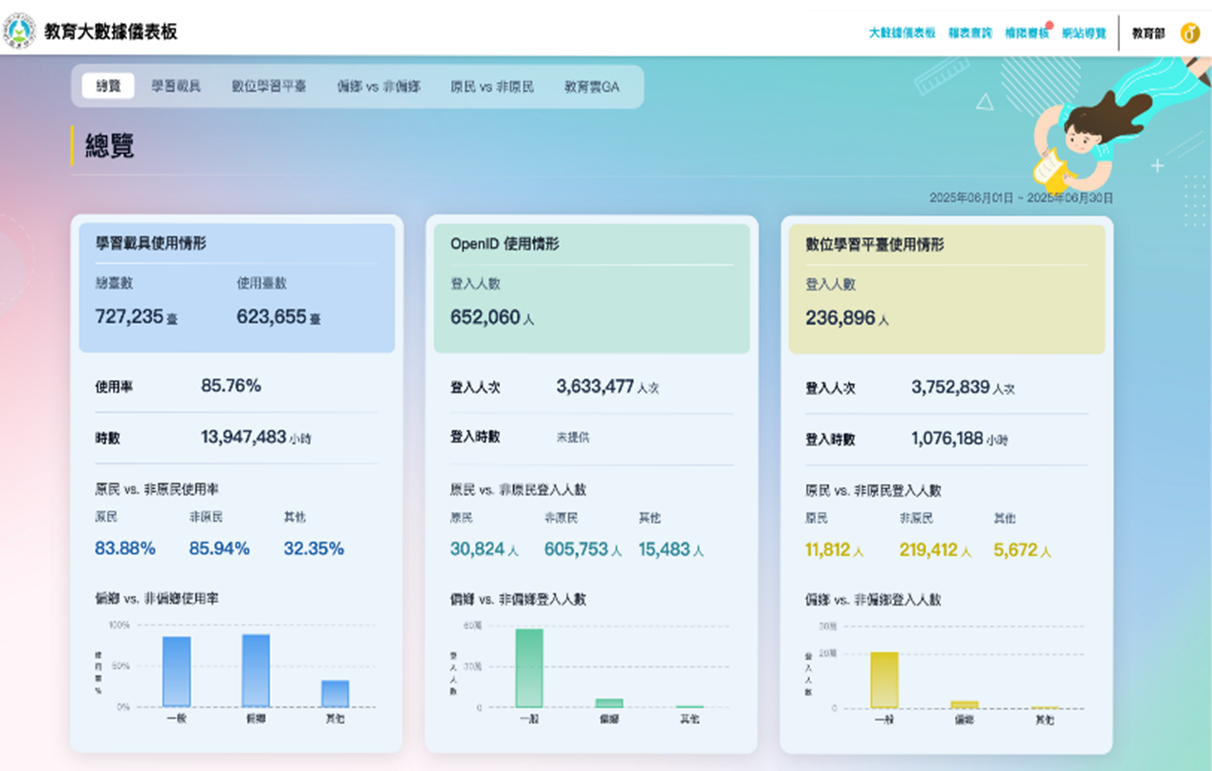
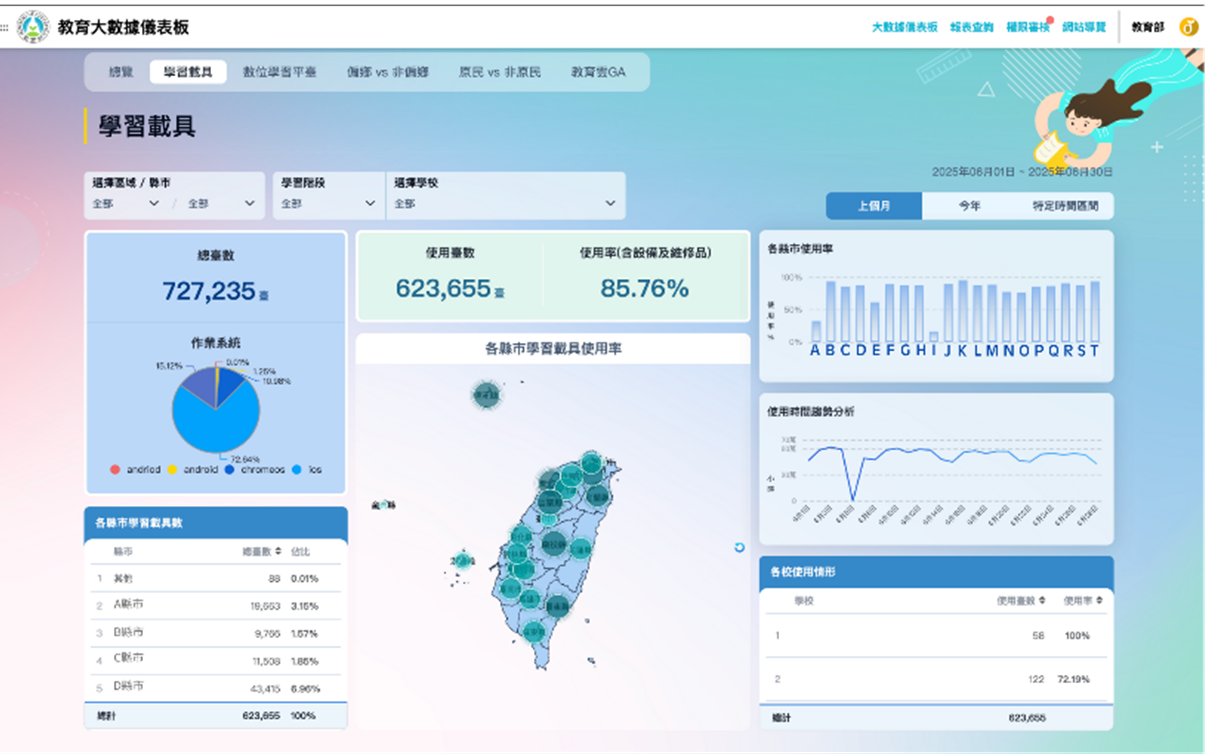
Data from the Technology-Enhanced Assessment Growth Test (2020‒2024) in Mandarin, English, and Math show that Grades 1‒8 students who consistently used TALP achieved higher pass rates than non-users. The improvements were particularly notable among lower-achieving students.
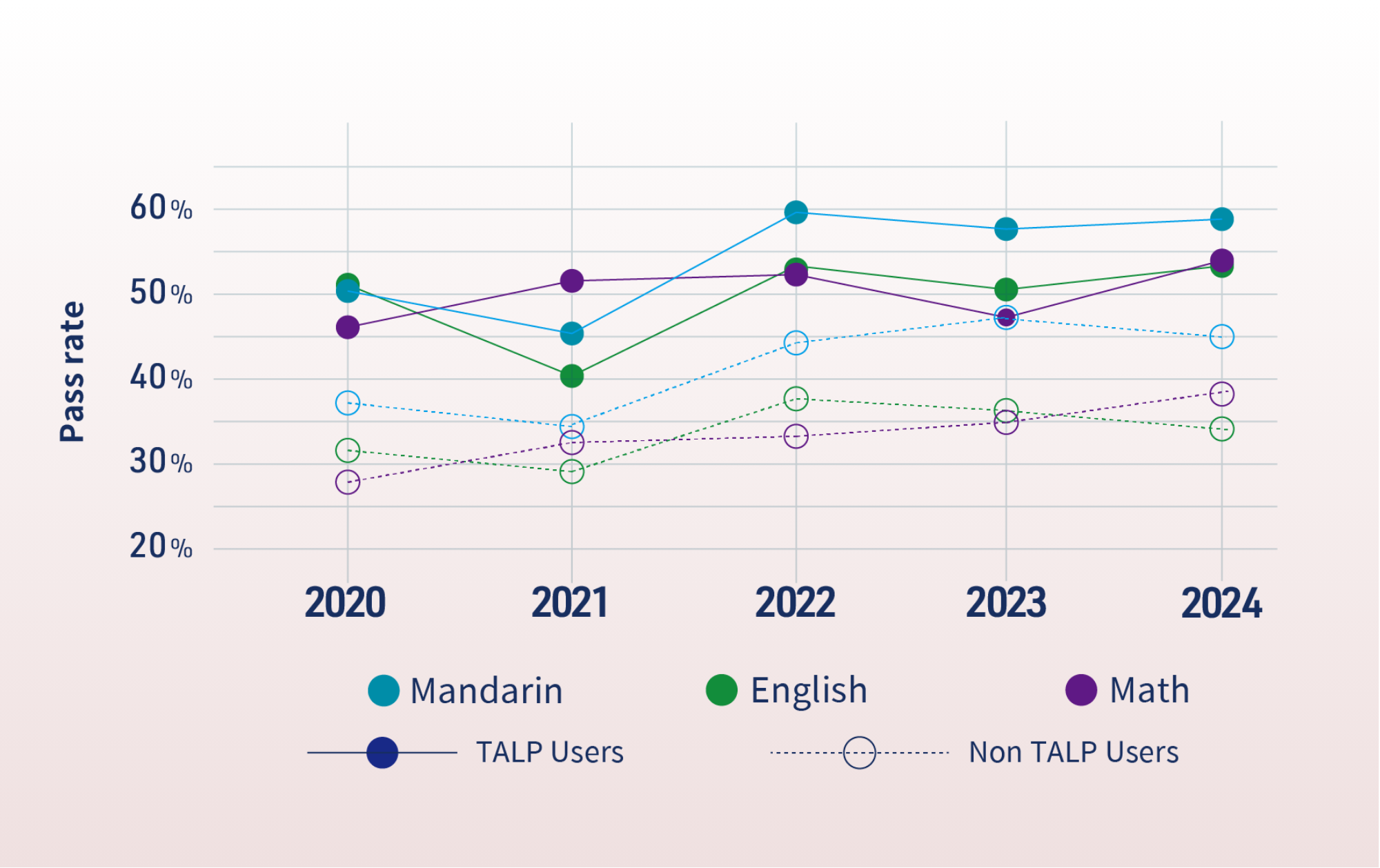
Pass rate trends for TALP users and non-users across three subjects, 2020‒2024.
In 2024, following the launch of TALPer, TALP user with extended periods and engaged with TALPer achieved the highest pass rates across key subjects, particularly those who combined sustained TALP use with active engagement through TALPer.
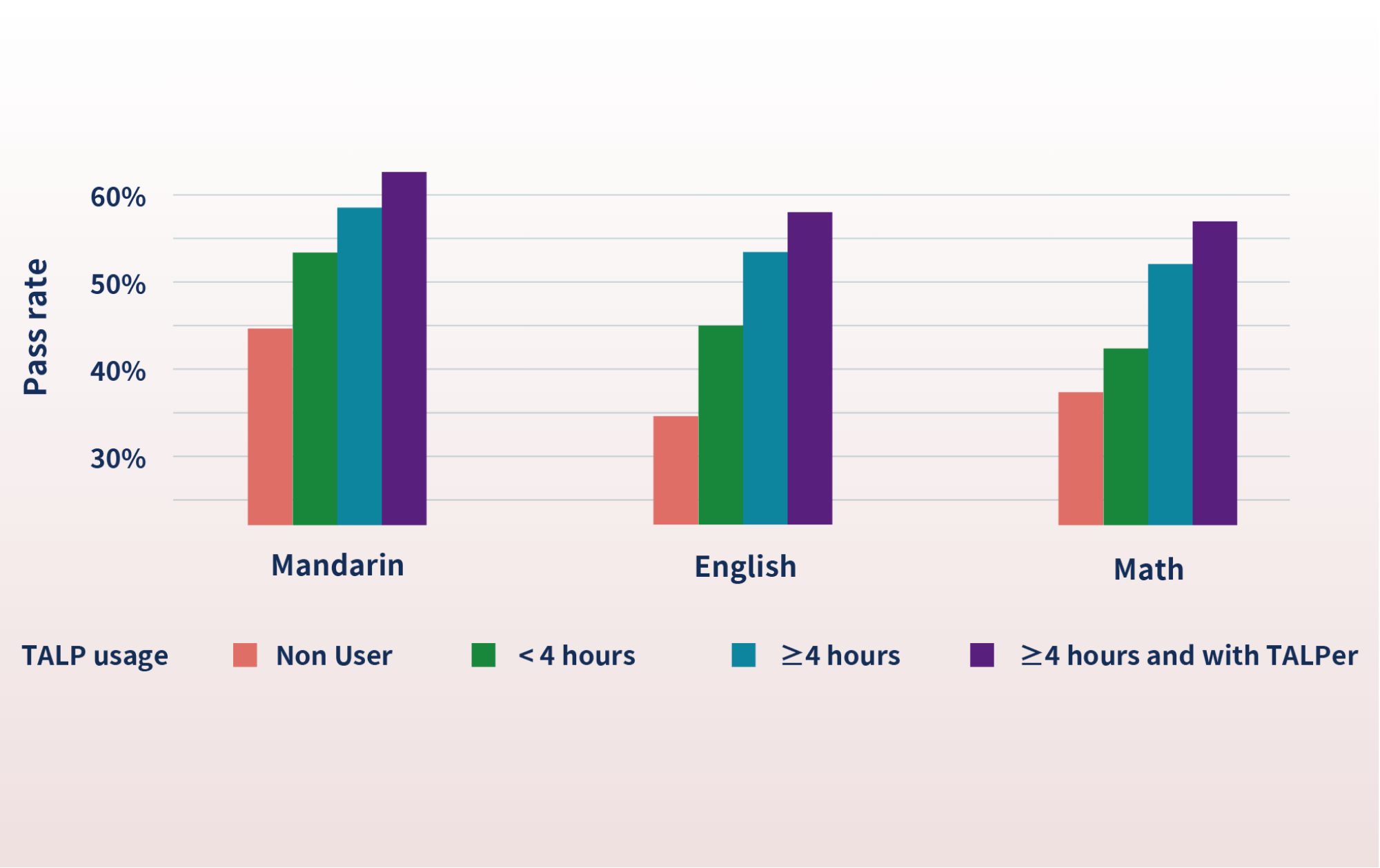
Pass rate trends by TALP usage duration and TALPer engagement, 2024.
In 2023, data from Grades 3‒8 students across 15 cities and counties indicated that those
who used TALP for at least four hours consistently achieved higher correct answer rates in
English, Mandarin, and Math proficiency tests than non-users.
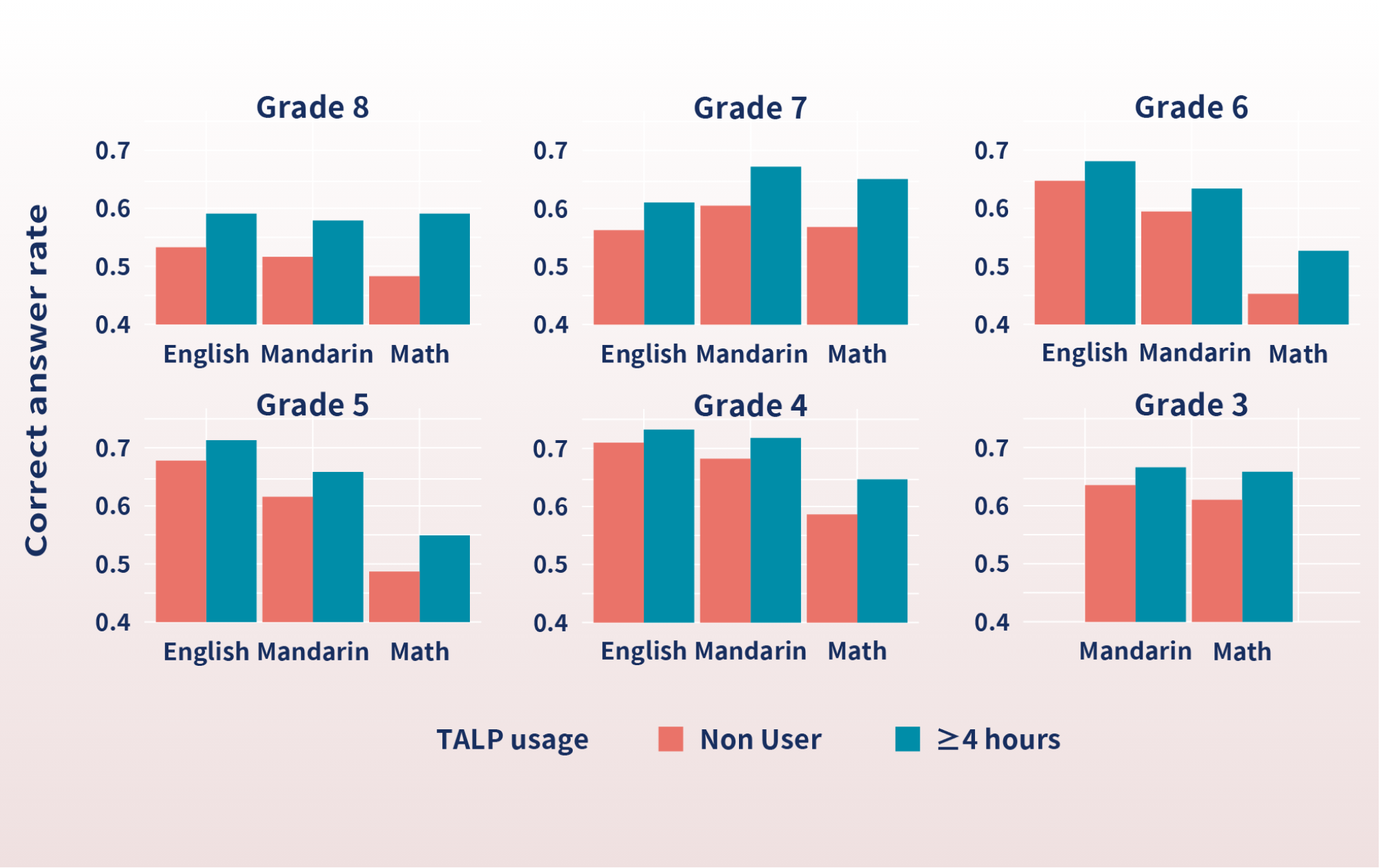
Students’correct answer rates by grade level with ≥4 hours of TALP use versus non-users, 2023.
SRL scores among Grades 3‒8 students improved notably from 2022 (before plan implementation)
to 2023 (after implementation), reflecting the impact of the Digital Learning Enhancement
Plan. Students who consistently used TALP also achieved higher SRL scores compared to casual
users.
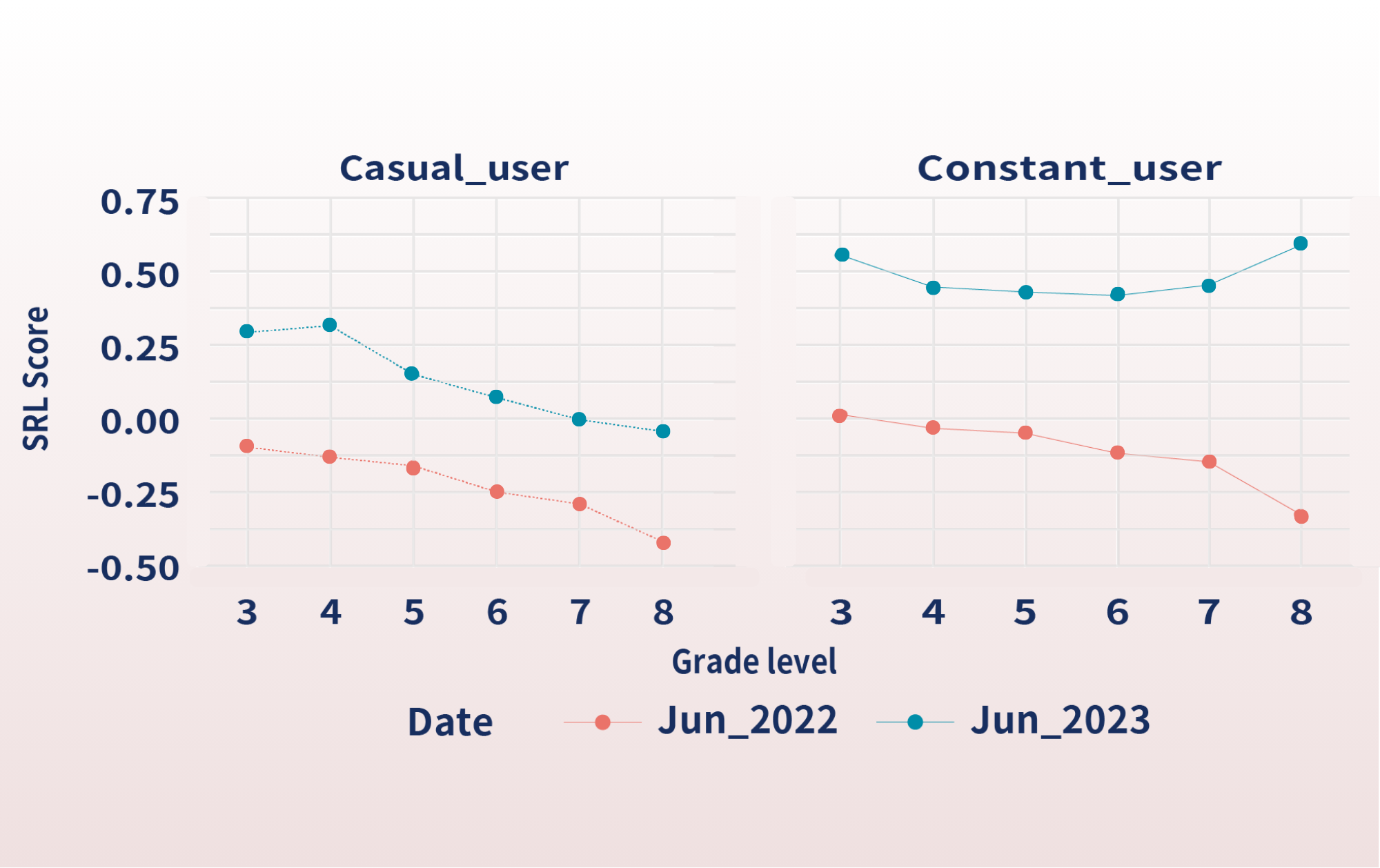
The improvement of SRL ability before and after plan, 2022‒2023.